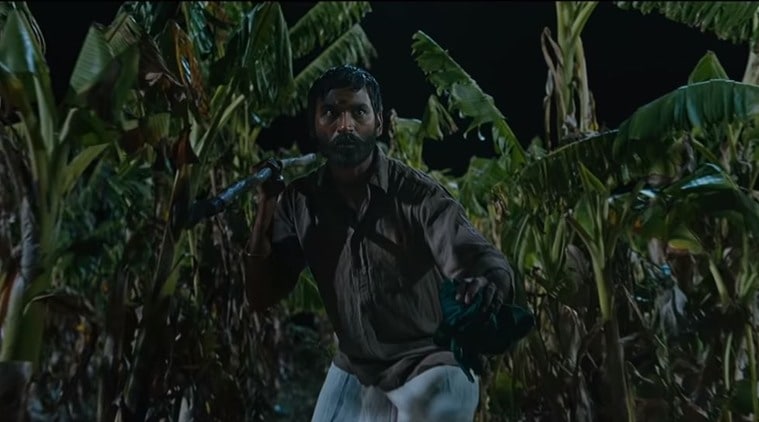MEDIA
Vetri Maaran’s ‘Asuran’ shows the power of images to go where words cannot
www.indianexpress.com | October 22, 2019
Asuran deals with caste oppression and social injustice. The visuals convey a searing reality that is most potent and penetrative. In such a case, language or dialogue is perhaps a shortcoming in itself.
I am an admirer of Vetri Maaran’s films. Asuran, which is currently playing in theatres, was eagerly awaited after the widely-acclaimed Vada Chennai. Though the censor certificate before the screening at a multiplex in Pune promised English subtitles, there were none when the film started playing. It was a full house and I was perhaps the only non-Tamil speaker in the audience.
The absence of subtitles didn’t seem to matter to anyone else, who were by then busy hooting and cheering when superstar Dhanush’s name appeared in the opening credits. It was a relief to witness non-homogeneous multiplex audience behaviour.
The theatre manager said that the absence of subtitles couldn’t be helped owing to a technical glitch. Nursing my initial disappointment, I sought solace in the company of my friend who generously offered to translate the dialogues or important bits of conversation in the film. The film began and the stark happenings on screen had consumed us immediately. Inability to understand the dialogue didn’t hinder my comprehension of the plot.
I later realised that suffering and oppression (which are at the core of the film) are not constrained by narrow considerations of language. Or, to put it another way, can language adequately convey human suffering and oppression? Does such a language exist?

Cinema is a visual art. Visuals construct their own language and serve the purpose of communication. Cinema exploits silence to further reveal the unsaid. Could mere words ever compensate or capture the visual intensity of a Andrei Tarkovsky or Mani Kaul or Yasujiro Ozu? Gurvinder Singh’s Chauthi Koot pulsates with a feeling of impending violence without actually showing any violent scenes but the sense of uncertainty and gloom pervades entirely through an array of associated visuals which work as metaphors. Girish Kasaravalli’s Dweepa or Raam Reddy’s Thithi don’t rely on language at all. It is a defiance of the spoken in favour of the reflective.
Asuran deals with caste oppression and social injustice. It features several moments of caste-based killings and humiliation such as family members wailing over a decomposed, mutilated body of one of their own, a Dalit woman being thrashed in public for daring to wear a slipper to school, the central character prostrating in front of every single upper-caste house in the village pleading forgiveness for his son, separate seating for the lower castes at the film theatre in the village, amongst several others. I wonder what kind of dialogue would suffice to express this humiliation? Does language even matter in such instances? Would I understand this better with the aid of subtitles?
The visuals convey a searing reality that is most potent and penetrative. In such a case, language or dialogue is perhaps a shortcoming in itself. Encountering the visuals in the absence of a language aid further helped in the construction of the real, as opposed to the real being mediated only through dialogues. In fact, it is a film that will be remembered for its visuals — the dry terrain, the jungle which is used for hiding, the hut in which the protagonist lives with his family, the village square — all shot in real locations, making the film viewing more experiential and immersive.
Why are these visuals important? To see is to believe. Visuals are a reaffirmation of what we know but perhaps may not have encountered personally. They bear witness and offer documentary evidence of our collective apathy. Words often help to capture the immediate reality but visuals transcend such boundaries.
Asuran charts the story of Sivasami (Dhanush), a Dalit farmer and his family who are entangled in a caste war in rural Tamil Nadu triggered by ownership of land. Violence leads to more violence in the film. Most importantly, Sivasami is able to avenge the injustice without any messiah-like intervention by an upper-caste evangelist. He makes his own choices and suffers for the same. It is not a film proclaiming end of misery or even creating a false sense of victory. Vetri Maaran offers no easy solutions. He accosts you with images that make you squirm about your inhumanity. At the end of the film, Sivasami advises his son to fight injustice through education. The subtitles still didn’t play but the visuals said it all.
(Source:https://indianexpress.com/article/opinion/columns/when-visuals-speak-asuran-6080932/)

